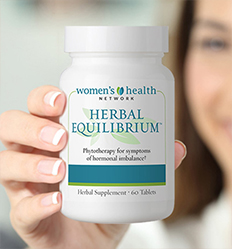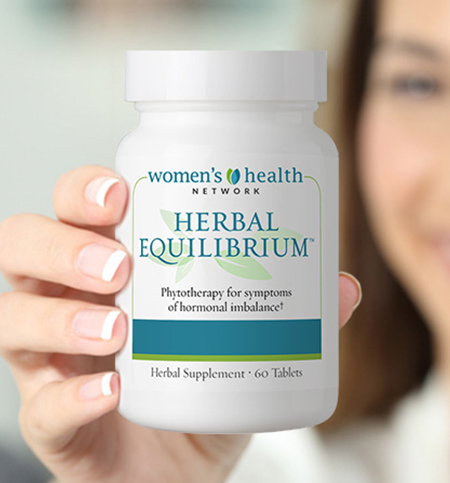Authored by Dr. Sarika Arora, MD
Women have become much savvier about artificial hormones since the Women’s Health Initiative (WHI) shed light on the risks of synthetic hormone replacement therapy (HRT). What many women don’t realize is that the Pill has higher amounts of synthetic hormones than HRT — up to twice as much, depending on the brand.
On balance, the Pill has a better safety record than many prescription drugs. But there are inherent risks with all drugs. While there is little data showing a connection between birth control pills and breast cancer risk, some women metabolize hormones differently. So the risk of long-term use of birth control pills is unclear for these women. There may also be an increased risk of cervical and liver cancer. For some women over 35, the Pill may also increase risk factors for blood clotting, cardiovascular disease, and liver, kidney or adrenal disease. It can also cause or worsen symptoms of hormonal imbalance: fluid retention, headaches, loss of sexual desire, breast tenderness, PMS, irregular bleeding, depression and hair loss.
Taking the Pill during perimenopause — what’s good to know should you choose the Pill
For a woman in perimenopause during her 40’s starting or continuing on the Pill, we have three basic recommendations.
1. First, ask for the lowest-dose birth control pill options available today when talking to your healthcare provider.
2. Second, apply the basic healthy hormonal support guidelines detailed above to the extent you can.
3. Third, keep track of how you feel on the Pill.
By following these health measures while you remain on the Pill, you are providing valuable support for your body that will serve you very well when you do come off — and someday you will have to come off.
If a woman in perimenopause really wants to continue to use the Pill or start the Pill and it seems right for her, then I recommend trying the lower-dose pills now available. The most common birth control pill prescribed by my colleagues for women in perimenopause tends to be the Loestrin 1/20 or Loestrin 24 pills — they are low-dose, regulate periods nicely and contain the least anti-androgenic progestin — all of which minimizes any decrease in libido and seems to have the fewest side effects overall. It’s also available in several generic forms at lower cost.
Other women have excess androgen concerns, from abundant testosterone or DHEA levels — such as acne, oily skin/hair, PCOS, severe PMS. Those women may then want to choose a pill whose progestin component offers the most antiandrogenic effects. The pills Yaz and Yasmin are comparatively antiandrogenic and approved for use in PMDD — though they do not agree with, or work well for every woman! They are also available in generic forms. These pills have recently been updated to include a form of folic acid, and then were renamed as BeYaz and Ocella. Ideally, all women of reproductive age should have folic acid stores to prevent neural tube birth defects in case they conceive.
While there’s no perfect solution for every situation, we’re fortunate nowadays to have a range of birth control options for women. These include not just the Pill but other options that can be very attractive for women in perimenopause.
If you are considering getting off birth control pills
It’s difficult for any practitioner to assess what’s really happening to your hormones while you’re on the Pill. So a conventional practitioner may simply pick an age (typically 50), and move you then from BCP’s directly to HRT.
This is a convenient way of keeping your appointment time to a minimum, but I don’t think it’s good medicine. The major problem is that this denies your body the chance to progress naturally from one stage to the next, and also to find its own balance. Another problem is that you aren’t given full information about your choices and their consequences. And finally, you’re missing the great purpose of menopause — reclaiming your life and your health.
It’s true that dropping BCP’s “cold turkey” after many years of use, for some women, can result in some very unpleasant “withdrawal” symptoms, because your body has been trained to depend on the synthetic hormones and may be making fewer of its own. And despite the kind of muzzle the Pill puts on your endocrine system, it’s still trying to make the transition through perimenopause.
Look for natural alternatives
But that’s no reason to jump from the Pill to HRT! In fact, it’s a more compelling reason to find natural alternatives like our Hormonal Health Package, which allow your entire body to transition off the Pill more gracefully. For many, working with their healthcare practitioner to make dietary and lifestyle changes while supporting hormone balance with herbs and nutrients can be a good choice. Some women may need additional support and may choose to use bioidentical HRT, but the good news is – you have choices.
The bottom line is that BCP’s can be a great choice for one woman and a poor choice for another — and what was right for you in your 20’s or 30’s may not be appropriate in your 40’s or 50’s. The same caveat applies to HRT when used during menopause. Some conventional doctors brush over these issues for patients on the Pill, but you don’t have to be pushed from one pill to the next!
I’d also like to highlight one little-discussed concern — the connection between the Pill and a woman’s nutritional status. We do know that in many women, birth control pills affect the absorption and utilization of nutrients, such as B vitamins, zinc and beta-carotene, among other key nutrients. And because a woman’s metabolism is influenced by the natural ebb and flow of her hormones, being on the Pill can alter her glucose tolerance, insulin sensitivity and liver function.
If you are transitioning off the Pill it is important to remember that it is possible to get pregnant as soon as you stop the Pill. You should always have an alternative method of contraception worked out prior to the transition.
Your periods on the Pill — understanding how BCPs affect your menstrual cycle in perimenopause
One nice benefit of the Pill is predictability, because your periods run like clockwork and are usually much lighter. For some, periods may even disappear — a feature enjoyed by some but anxiety-producing for others. What most women recognize as their menses while on the Pill is not a real period but a “withdrawal bleed” that’s orchestrated by the Pill hormones, not your own. Back when the Pill was new and contained much higher amounts of hormones, its creators and the women who took it were reassured by the message a withdrawal bleed seemed to imply: they weren’t pregnant now but could become so later, when and if desired.
While you are actively taking the Pill, the synthetic estrogen component stimulates the lining of your uterus somewhat, as your own hormones would normally do on their own, while at the same time the synthetic progestin agent counteracts, or “opposes” that proliferation to control the lining’s thickness. Meanwhile, the hormones in the Pill curtail ovarian function and the release of an egg. At the end of the pack, when you stop taking the active pills for several days or use placebo pills, the drop-off in both hormones stimulates a withdrawal bleed, resembling what you would experience at the end of a natural cycle. When you use a continuous-cycle or extended-cycle Pill it simply suppresses this process of creating a “pseudo period.”
A time to tune into your body
Having this semblance of control over your cycle can be welcome for many women, especially for women with irregular cycles and bleeding patterns. However, perimenopause is an opportune time to tune in to your body, and the Pill is a way of pushing the “mute” button. Using the Pill may make sense if you are intent on preventing unwanted pregnancy at any age, until another method can be utilized more effectively. Relying on the Pill may make less sense if you are in a stage of your life that allows for other forms of birth control, and you are instead motivated to balance your hormones naturally and nutritionally.
If I’m in perimenopause, can I still get pregnant?
Yes! We’ve all heard about those wondrous menopausal babies!
Because long-term use of the Pill effectively takes over your hormonal cycles, when you stop taking your BCP’s, it could be months before your body clears the hormones. When or if you’ll ovulate again can be unpredictable at best. We usually counsel women in perimenopause not to consider themselves safe from conception until they’ve gone 18 months without a period after stopping the Pill.
The hormones in the Pill also cloud results of the FSH tests (for follicle-stimulating hormone) women are given to determine if they’re menopausal. FSH tests can still be used, however, if the practitioner times it right. I prefer to schedule the blood draw for the day the woman is to start her new pill pack, because she won’t have taken any active pills for 7 or 8 days at that point.
If your FSH is high but you’re still getting a period — even if it’s just one period a year — you can get pregnant. I’ve seen cases when perimenopausal women experienced surges of hormones and a few random instances of ovulation at unexpected times. So while elevated FSH levels make pregnancy less likely, they are no guarantee against it.
Going off the birth control pill — healthy hormonal support at any age
We think less is more when it comes to synthetic (non-bioidentical) hormones. So, taking individual needs and health history into account, we encourage women at any age who have been on the Pill for a number of years to think about discontinuing it — with support. It is easier than you think with the following steps:
- Choose another birth control method.
- If you are already on a 30–35-mcg estrogen birth control pill formula, then ask your healthcare practitioner to drop you down to an ultra-low-dose 20-mcg estrogen pill formula like LoEstrin 1/20 or the Nuvaring for 1–3 months, in preparation for stopping the Pill.
- Take a medical-grade multivitamin/mineral supplement every day (We offer our own doctor-formulated Essential Nutrients in our shop.)
- Consider starting a multibotanical formula such as our Herbal Equilibrium to ameliorate the dual effects of Pill “withdrawal” and fluctuations in your body’s own hormones in perimenopause.
- Don’t smoke and limit your alcohol intake, instead honor your healthy habits.
- Follow a nutrient-dense, low-glycemic diet of whole foods with adequate lean protein, healthy fats, ample fiber, complex carbohydrates and phytonutrients — when eating every meal and snack.
- Drink plenty of filtered water.
- Minimize toxins. Being on the Pill puts additional demands on your detoxification pathways, so pay special attention to your environment and any dietary sensitivities or digestive concerns.
- Exercise regularly and practice gentle stress management techniques such as yoga, or deep-breathing.
- After at least one month of consistent support, stop your Pill at the end of a package and continue the daily nutrient and herbal support you have started.
- For at least the first month off the Pill be patient and especially good to yourself, with positive daily affirmation, continued self-nourishment, and consistent nutrient and herbal support.
The few women who experience more severe symptoms when they go off the Pill can layer additional support, such as a higher intake of phytonutrient-rich foods, including soy. When appropriate, we sometimes suggest discussing the use of low-dose over-the-counter progesterone cream with your healthcare practitioner, or exploring the use of bioidentical hormone replacement (bHRT) on a limited basis.
Getting your period again, once off the Pill
Every woman going off the Pill should consider her cycle when she makes decisions about other birth control methods. Importantly, the bleeding pattern you had while on the Pill does not predict what will occur when you go off.
If you stop taking birth control hormones and do not get a period, don’t just assume you’ve entered menopause — or that you’re pregnant (though it could be wise to test for pregnancy if there’s any question)! For instance, a woman can sometimes take several months to settle back into her natural hormonal rhythm.
If six months to a year goes by without a period, then talk to your doctor about menopause and ask for an FSH test. If 18 months go by without a period and your blood test indicates menopause, then it is safe to assume that you will not get pregnant. Until then, again, if you do not want to become pregnant, you should practice some form of birth control or abstinence.
The choice to use birth control is yours
We want our readers to have the best, most up-to-date information so they can make decisions that work well for them.
Whether you choose to stay on the Pill during perimenopause or to come off it, supporting your body through optimal nutrition and lifestyle should be high on your list. The better you treat yourself while on the Pill, the easier your transition will be when you do inevitably come off it; plus, you will then have the positive health measures in place to help you overcome hormonal imbalance symptoms in perimenopause and beyond.
Cibula, D., et al. 2010. Hormonal contraception and risk of cancer. Hum. Reprod. Update, 16 (6), 631–650. URL (abstract): https://www.ncbi.nlm.nih.gov/pubmed/20543200 (accessed 03.24.2011).
Figueiredo, J., et al. 2010. Oral contraceptives and postmenopausal hormones and risk of contralateral breast cancer among BRCA1 and BRCA2 mutation carriers and noncarriers: The WECARE Study. Breast Cancer Res. Treat., 120 (1), 175–183. URL: https://www.ncbi.nlm.nih.gov/pmc/articles/PMC2835545/?tool=pubmed (accessed 03.24.2011).
Rosenberg, L., et al. 2009. A case-control study of oral contraceptive use and incident breast cancer. Am. J. Epidemiol., 169 (4), 473–479. URL: https://aje.oxfordjournals.org/content/169/4/473.long (accessed 03.24.2011).
Lee, E., et al. 2007. Effect of reproductive factors and oral contraceptives on breast cancer risk in BRCA1/2 mutation carriers and noncarriers: Results from a population-based study. Cancer Epidemiol. Biomarkers Prev., 17 (11), 3170–3178. URL: https://cebp.aacrjournals.org/content/17/11/3170.long (accessed 03.24.2011).
Brohet, R., et al. 2007. Oral contraceptives and breast cancer risk in the international BRCA1/2 carrier cohort study: a report from EMBRACE, GENEPSO, GEO-HEBON, and the IBCCS Collaborating Group. J. Clin. Oncol., 25 (25), 3831–3836. URL (abstract): https://www.ncbi.nlm.nih.gov/pubmed/17635951 (accessed 03.24.2011).
Haile, R., et al. 2006. BRCA1 and BRCA2 mutation carriers, oral contraceptive use, and breast cancer before age 50. Cancer Epidemiol. Biomarkers Prev., 15 (10), 1863–1870. URL: https://cebp.aacrjournals.org/content/15/10/1863.long (accessed 03.24.2011).
Grenader, T., et al. 2005. BRCA1 and BRCA2 germ-line mutations and oral contraceptives: To use or not to use. Breast, 14 (4), 264–268. URL (abstract): https://www.ncbi.nlm.nih.gov/pubmed/16085232 (accessed 03.24.2011).
Narod, S., et al. 2002. Oral contraceptives and the risk of breast cancer in BRCA1 and BRCA2 mutation carriers. J. Natl. Cancer inst., 94 (23), 1773–1779. URL: https://jnci.oxfordjournals.org/content/94/23/1773.long (accessed 03.24.2011).
Burkman, R., et al. 2004. Safety concerns and health benefits associated with oral contraception. Am J. Obstet. Gynecol., 190 (4 Suppl.), S5–S22. URL (abstract): https://www.ncbi.nlm.nih.gov/pubmed/15105794 (accessed 03.24.2011).
Dinger, J., et al. 2010. Risk of venous thromboembolism and the use of dienogest- and drospirenone-containing oral contraceptives: Results from a German case-control study. J. Fam. Plann. Reprod. Health Care, 36 (3), 123–129. URL (abstract): https://www.ncbi.nlm.nih.gov/pubmed/20659364 (accessed 03.25.2011).
Sehovic, N., & Smith, K. 2010. Risk of venous thromboembolism with drospirenone in combined oral contraceptive products. Ann. Pharmacother., 44 (5), 898–903. URL (abstract): https://www.ncbi.nlm.nih.gov/pubmed/20371756 (accessed 03.25.2011).
Frye, C. 2006. An overview of oral contraceptives: Mechanism of action and clinical use. Neurology, 66 (6 Suppl. 3), S29–S36. Review. URL (abstract): https://www.ncbi.nlm.nih.gov/pubmed/16567739 (accessed 03.24.2011).
Petersen, K. 2002. Pharmacodynamic effects of oral contraceptive steroids on biochemical markers for arterial thrombosis. Studies in non-diabetic women and in women with insulin-dependent diabetes mellitus. Dan. Med. Bull., 49 (1), 43–60. URL (abstract): https://www.ncbi.nlm.nih.gov/pubmed/11894723 (accessed 03.24.2011).
Comp, P. 1996. Coagulation and thrombosis with OC use: Physiology and clinical relevance. Dialogues Contracept., 5 (1), 1–3. URL (abstract): https://www.ncbi.nlm.nih.gov/pubmed/12347721 (accessed 03.24.2011).
De Groote, D., et al. 2009. Effects of oral contraception with ethinylestradiol and drospirenone on oxidative stress in women 18–35 years old. Contraception, 80 (2), 187–193. URL (abstract): https://www.ncbi.nlm.nih.gov/pubmed/19631796 (accessed 03.25.2011).
[No author or date of publication.] Beyaz (drospirenone/ethinyl estradiol/levomefolate calcium tablets and levomefolate calcium tables) receives FDA approval. URL: https://www.beyaz.com (accessed 03.30.2011)
Wallwiener, M., et al. 2010. Effects of sex hormones in oral contraceptives on the female sexual function score: A study in German female medical students. Contraception, 82 (2), 155–159. URL (abstract): https://www.ncbi.nlm.nih.gov/pubmed/20654756 (accessed 03.25.2011).
See also: Elton, C. 2010. Study: Low sex drive, ladies? It might be your Pill. Time. URL:https://www.time.com/time/health/article/0,8599,1987870,00.html (accessed 05.10.2010).
[No authors listed.] 2010. Information from your family doctor. Side effects of hormonal contraceptives. Am. Fam. Physician, 82 (12), 1509. URL: https://www.aafp.org/afp/2010/1215/p1509.html (accessed 03.24.2011).
Oinonen, k. 2009. Putting a finger on potential predictors of oral contraceptive side effects: 2D:4D and middle-phalangeal hair. Psychoneuroendocrinology, 34 (5), 713–726. URL (abstract): https://www.ncbi.nlm.nih.gov/pubmed/19131172 (accessed 03.24.2011).
Coffee, A., et al. 2008. Comparison of scales for evaluating premenstrual symptoms in women using oral contraceptives. Pharmacotherapy, 28 (5), 576–583. URL (abstract): https://www.ncbi.nlm.nih.gov/pubmed/18447656 (accessed 03.24.2011).
Kurshan, N., & Neill Epperson, C. 2006. Oral contraceptives and mood in women with and without premenstrual dysphoria: A theoretical model. Arch. Women’s Ment. Health, 9 (1), 1–14. URL (abstract): https://www.ncbi.nlm.nih.gov/pubmed/16206030 (accessed 03.24.2011).
Kulkarni, J. 2007. Depression as a side effect of the contraceptive pill. Expert Opin. Drug Saf., 6 (4), 371–374. URL (abstract): https://www.ncbi.nlm.nih.gov/pubmed/17688380 (accessed 03.25.2011).
McAndrews, P. [No date of publication.] American Hair Loss Association | Women’s Hair Loss |Oral contraceptives. URL: https://www.americanhairloss.org/women_hair_loss/oral_contraceptives.asp (accessed 03.24.2011).
Griffiths, W. 1973. Diffuse hair loss and oral contraceptives. Br. J. Dermatol., 88 (1), 31–36. URL (abstract): https://onlinelibrary.wiley.com/doi/10.1111/j.1365-2133.1973.tb06668.x/abstract (accessed 03.24.2011).
Thurnham, D., & Northrop–Clewes, C. 1999. Optimal nutrition: Vitamin A and the carotenoids. Proc. Nutr. Soc., 58 (2), 449–457. URL (abstract): https://www.ncbi.nlm.nih.gov/pubmed/10466190 (accessed 03.24.2011).
Shojania, A. 1982. Oral contraceptives: Effect of folate and vitamin B12 metabolism. Can. Med. Assoc. J., 126 (3), 244–247. URL: https://www.ncbi.nlm.nih.gov/pmc/articles/PMC1862844/?tool=pubmed (accessed 03.25.2011).
Thurnham, D., & Northrop–Clewes, C. 1999. Optimal nutrition: Vitamin A and the carotenoids. Proc. Nutr. Soc., 58 (2), 449–457. URL (abstract): https://www.ncbi.nlm.nih.gov/pubmed/10466190 (accessed 03.24.2011).
Shojania, A. 1982. Oral contraceptives: Effect of folate and vitamin B12 metabolism. Can. Med. Assoc. J., 126 (3), 244–247. URL: https://www.ncbi.nlm.nih.gov/pmc/articles/PMC1862844/?tool=pubmed (accessed 03.25.2011).
King, J. 1987. Do women using oral contraceptive agents require extra zinc? J. Nutr., 117 (1), 217–219. URL: https://jn.nutrition.org/content/117/1/217.long (accessed 03.25.2011).
Berg, G., et al. 1997. Use of oral contraceptives and serum beta-carotene. Eur. J. Clin. Nutr., 51 (3), 181–187. URL (abstract): https://www.ncbi.nlm.nih.gov/pubmed/9076409 (accessed 03.25.2011).
Thorp, V. 1980. Effect of oral contraceptive agents on vitamin and mineral requirements. J. Am. Diet. Assoc., 76 (6), 581–584. URL (abstract): https://www.ncbi.nlm.nih.gov/pubmed/7400487 (accessed 03.25.2011).
Webb, J. 1980. Nutritional effects of oral contraceptive use: A review. J. Reprod. Med., 25 (4), 150–156. URL (abstract): https://www.ncbi.nlm.nih.gov/pubmed/7001015 (accessed 03.25.2011).
Kilic, S., et al. 2010. Inflammatory-metabolic parameters in obese and nonobese normoandrogenemic polycystic ovary syndrome during metformin and oral contraceptive treatment. Gynecol. Endocrinol. [Epub ahead of print.] URL (abstract): https://www.ncbi.nlm.nih.gov/pubmed/21105835 (accessed 03.24.2011).
Lopez, L., et al. 2009. Steroidal contraceptives: Effect on carbohydrate metabolism in women without diabetes mellitus. Cochrane Database Syst. Rev. (4), CD006133. URL (abstract): https://www.ncbi.nlm.nih.gov/pubmed/19821355 (accessed 03.25.2011).
Additional resources for women
Our Bodies, Ourselves: A New Edition for a New Era, 2005 edition.
From the Boston’s Women’s Health Book Collective.
Women’s Bodies, Women’s Wisdom, by Christiane Northrup, MD.
CDC website for STD’s: https://www.cdc.gov/nchstp/dstd/disease_info.htm#GenInfo
Planned Parenthood website section on STD’s: https://www.plannedparenthood.org/sexual-health/stis-stds-101.htm
Planned Parenthood section on birth control options: https://www.plannedparenthood.org/birth-control-pregnancy/birth-control-4211.htm
Additional resources for practitioners
Contraceptive Technology, 18th Revised edition, by Robert Hatcher, MD. This is a must-have for those working in any facet of women’s health.
Managing Contraceptive Pill Patients, 12th edition, by Richard Dickey, MD. This is “the Dickey pill book” and a must-have for those regularly prescribing and trouble-shooting the pill, patch, or ring.











